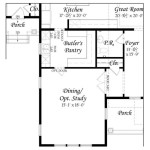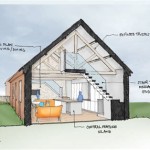Exploring The Drummond House Plantation: History, Architecture, and Legacy
The Drummond House Plantation, located in St. Charles Parish, Louisiana, stands as a poignant reminder of the antebellum South and its complex social and economic structures. This historic site offers a glimpse into the lives of plantation owners, enslaved people, and the evolution of sugarcane cultivation in the region. A comprehensive exploration of Drummond House Plantation necessitates a consideration of its historical development, architectural features, and lasting legacy.
The plantation's history is intricately interwoven with the expansion of sugar production in Louisiana. The fertile lands along the Mississippi River proved ideal for sugarcane cultivation, and planters like the Drummond family capitalized on this opportunity. Early records indicate that the land was acquired and developed for agricultural purposes in the late 18th and early 19th centuries. Like many plantations of the era, Drummond House relied heavily on the forced labor of enslaved Africans and their descendants. The enslaved population not only worked in the fields, cultivating and harvesting sugarcane, but also performed essential tasks related to processing the cane into sugar and maintaining the plantation infrastructure.
The plantation's name, "Drummond House," is derived from a prominent family who owned the property for a significant period. While the specifics of the Drummond family's acquisition and management of the plantation require further research, their presence undoubtedly shaped the plantation's development and its role in the local economy. Records pertaining to land ownership, census data, and estate inventories offer potential avenues for uncovering more details about the Drummond family's involvement.
The social hierarchy of the plantation was rigidly defined. At the apex was the planter family, who held economic and political power. Below them were overseers and skilled laborers, followed by the enslaved population, who endured lives of hardship and deprivation. This social structure was integral to the functioning of the plantation system and perpetuated racial inequality.
The Architecture of Drummond House
The architectural style of Drummond House is a testament to the prosperity of the sugarcane industry and the influence of European architectural traditions on Southern plantation homes. While detailed architectural documentation may be limited, the structure likely incorporated elements of the Greek Revival style, a popular choice for plantation homes in the 19th century. This style is characterized by symmetrical facades, prominent columns, and classical detailing.
The main house, or "Big House," served as the residence of the planter family and often housed spaces for entertaining guests and conducting plantation business. Interior spaces would have been carefully designed to reflect the family's status and wealth. High ceilings, ornate moldings, and expensive furnishings were common features of plantation homes. The layout of the house likely included a formal parlor, dining room, bedrooms, and perhaps a library or study.
Beyond the main house, the plantation complex included a variety of outbuildings, each serving a specific function. These buildings might have included a kitchen, laundry, smokehouse, and storage sheds. Slave quarters, where the enslaved people lived, were typically located away from the main house and were often of simpler construction. These dwellings provided minimal shelter and living space for the enslaved population.
The landscape surrounding the plantation house was also an important element of the overall design. Landscaped gardens, tree-lined avenues, and expansive lawns created a sense of grandeur and further emphasized the planter family's social standing. The location of the plantation near the Mississippi River facilitated transportation of sugarcane and other goods to market, contributing to the plantation's economic viability.
Analyzing the architecture of Drummond House can provide valuable insights into the social and economic dynamics of the plantation system. The contrast between the opulence of the main house and the simplicity of the slave quarters underscores the inequalities inherent in the system. Preserving and studying these architectural remnants is crucial for understanding the full scope of plantation life.
Sugarcane Cultivation and Processing at Drummond House
The economic success of Drummond House Plantation rested on the cultivation and processing of sugarcane. The process involved a complex series of steps, from planting and harvesting to boiling and crystallizing the sugar. The enslaved workforce was responsible for carrying out these labor-intensive tasks.
The planting season typically began in the fall, with sugarcane stalks being planted in rows. Throughout the growing season, the fields required constant attention, including weeding, fertilizing, and irrigation. The hot and humid climate of Louisiana presented both opportunities and challenges for sugarcane cultivation. While the climate was conducive to growth, it also fostered the spread of pests and diseases.
The harvest season, known as "grinding season," was a particularly demanding time. The sugarcane was cut by hand and transported to the sugar mill, where it was crushed to extract the juice. The juice was then boiled in large kettles to evaporate the water and concentrate the sugar. This process required careful monitoring to ensure that the sugar crystallized properly.
The final product was raw sugar, which was then packaged and shipped to market. The production of sugar was a highly profitable industry, but it came at a tremendous human cost. The enslaved people who toiled in the fields and the sugar mill endured long hours, harsh conditions, and physical abuse. Their contributions to the plantation's success were often overlooked or minimized.
Technological advancements in sugar processing gradually improved efficiency and increased production. Steam-powered mills replaced animal-powered mills, and new methods of refining sugar were developed. However, these advancements did not alleviate the burden of labor on the enslaved population. The plantation system remained dependent on forced labor until the abolition of slavery.
The Legacy of Drummond House Plantation
The legacy of Drummond House Plantation is multifaceted and complex. On the one hand, it represents the economic prosperity and architectural achievements of the antebellum South. On the other hand, it serves as a reminder of the injustice and brutality of slavery. Understanding this duality is essential for interpreting the plantation's significance.
The plantation stands as a physical reminder of a bygone era, offering opportunities for historical research and interpretation. Archaeological investigations can uncover artifacts and other evidence that shed light on the lives of both the planter family and the enslaved population. Oral histories and documented accounts can provide additional perspectives on the plantation's history.
Preserving Drummond House Plantation is crucial for educating future generations about the history of slavery and its lasting impact on American society. By confronting the difficult aspects of the past, we can gain a deeper understanding of the present and work towards a more equitable future. The plantation can serve as a site for dialogue and reflection on issues of race, inequality, and social justice.
The study of Drummond House Plantation can contribute to a broader understanding of the history of sugarcane cultivation, plantation life, and the institution of slavery in Louisiana. By examining the plantation's architecture, economic activities, and social structures, researchers can gain valuable insights into the complexities of the past. Furthermore, the legacy of the Drummond House Plantation serves as a crucial reminder of the importance of remembering and learning from the injustices of the past to strive for a more equitable and just future.
Ultimately, exploring the Drummond House Plantation requires a nuanced approach that acknowledges the full spectrum of its history, from the economic contributions of its owners to the immense suffering of the enslaved people who built and sustained it. Only through a comprehensive understanding can we truly appreciate the significance of this historic site and its enduring legacy.

The Drummond Ada Friendly Family Escape Patio Houses For In Nashville Tennessee United States Airbnb

Drummond House Ada Friendly Nashville Retreat Vrbo

Nhn Bearmouth Ranch Drummond Mt 59832 With Id Mtrmls30033794 Christie S International Real Estate

Mississippi Valley Plantation House In Greek Revival Style Traditional Exterior Dallas By Richard Drummond Davis Architects Houzz Ie

Yellow Panoramic Custom Chalet With Walkout Basement By Drummond House Plans Coastal Exterior Tampa Houzz Ie

Drummond House Ada Friendly Nashville Retreat Vrbo

Dirty Money The Irish Aesthete

Vacation Homes Near Belle Meade Plantation House Als More Vrbo

Church Hill House Model Farm Drummond Hotel Presbyterian Bridge Let S Really Talk About The Unsung Hero Of Early 19th Century Irish Palladianism Richard Suter Who Transformed

Hunter S Home Oklahoma Historical Society
Related Posts








